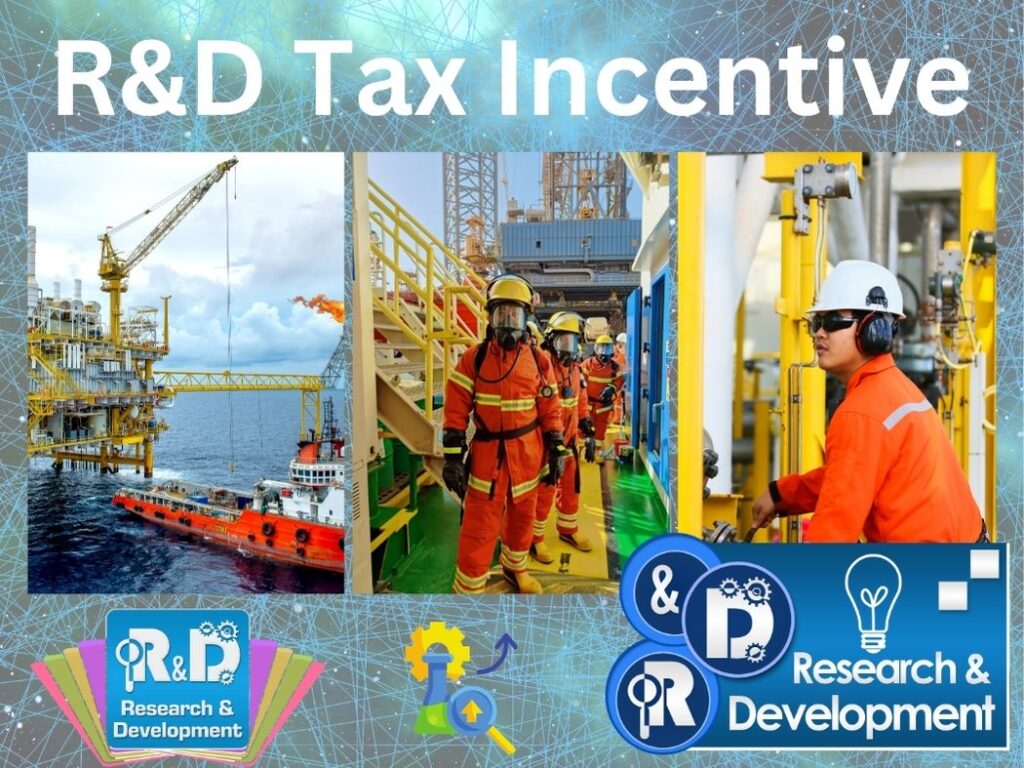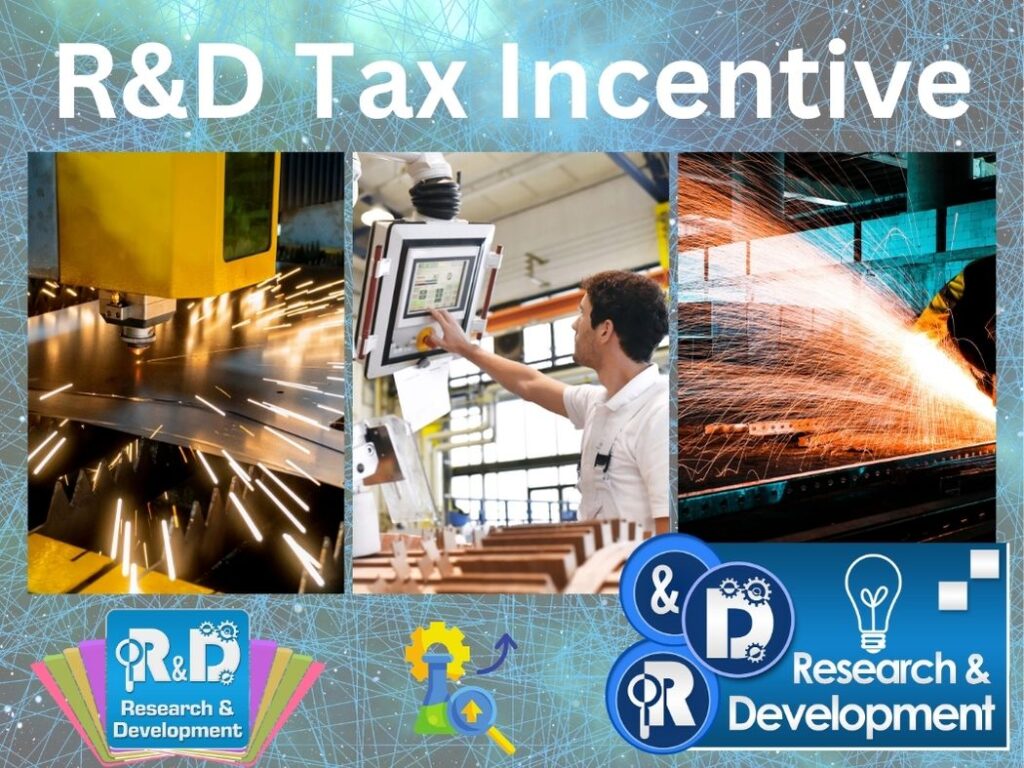2025 End of Financial Year Considerations in R&D Tax: Complete Guide to Maximising Claims

Want to turn your innovation costs into cash? The 2025 end of financial year brings massive opportunities for Australian businesses to claim up to 45% back on R&D expenses. With $11.2 billion claimed by 11,545 companies last year, smart businesses are positioning themselves to capture their share
. This guide reveals exactly how to navigate the 2025 EOFY R&D tax landscape, avoid costly mistakes, and maximise your refund before the April 30 deadline.
The R&D tax incentive offers refundable offsets of up to 43.5% for eligible businesses under $20 million revenue, while larger companies benefit from intensity-based premiums reaching 16.5% above corporate tax rates.
Major 2025 changes include gambling and tobacco exclusions, enhanced ATO scrutiny, and streamlined online applications.
Understanding these updates alongside proper documentation, timing strategies, and compliance requirements determines whether your business captures thousands or loses out entirely.
The R&D Tax Incentive Framework for 2025
Think of the R&D tax incentive as the government’s way of saying “we’ll pay you to innovate.”
Here’s the deal.
Every dollar you spend developing new knowledge can return up to 45 cents directly to your bank account.
Not a loan. Not a grant you might get. Cold, hard cash back from the ATO.
The program targets one thing: encouraging Australian businesses to push boundaries and create new solutions.
But here’s where most businesses mess up.
They think R&D means lab coats and test tubes.
Wrong.
What Actually Counts as R&D in 2025
R&D activities must resolve technical uncertainty through systematic experimentation.
Your web developer creating a new checkout process?
That’s R&D.
Your team solving software integration challenges?
R&D.
Manufacturing process improvements that required testing and refinement?
Also R&D.
The key question: Are you generating new knowledge that didn’t exist before?
If yes, you’re probably eligible.
Major 2025 Program Updates
Three critical changes hit in 2025 that affect every R&D claim:
Gambling and tobacco exclusions – From July 1, 2025, these industries lose R&D benefits entirely
Enhanced ATO scrutiny – Joint reviews between ATO and Department of Industry mean tougher compliance checks
Online-only applications – All submissions must go through AusIndustry Customer Portal
The government wants transparency.
They published their first R&D Tax Incentive Transparency Report showing exactly who claimed what.
Your claims might become public knowledge.
R&D Tax Incentive Eligibility Criteria: Who Qualifies in 2025
Stop guessing if you’re eligible.
The criteria are straightforward, but missing one requirement kills your entire claim.

Entity Eligibility Requirements
You qualify if you’re:
Australian company incorporated here
Foreign company but Australian tax resident
Foreign company from countries with double-tax agreements with Australia
Revenue threshold matters.
Under $20 million annual revenue = refundable offset (cash back)
Over $20 million = non-refundable offset (tax reduction only)
Core R&D Activity Standards
Your activities must meet specific technical criteria:
Systematic experimentation – You can’t just wing it and hope for the best
Technical uncertainty – The outcome wasn’t guaranteed when you started
New knowledge generation – You discovered something that didn’t exist before
Australian-based work – Activities must happen on Australian soil (with specific exceptions)
Documentation trail – Every step needs proof
Supporting R&D Activities
Supporting activities complement your core R&D work.
They include:
Market research directly related to core activities
Administrative support for R&D projects
Training staff for specific R&D techniques
Acquiring materials for experimentation
Warning: Supporting activities can’t exceed core R&D activities in cost or time.
Common Eligibility Mistakes
Thinking routine upgrades qualify – They don’t
Assuming all software development counts – Bug fixes and standard features won’t cut it
Missing the registration deadline – No registration within 10 months = no claim
Poor documentation – “We did R&D” isn’t proof
Eligible Expenditure and Calculations: Maximising Your 2025 Refund
Here’s where real money gets made or lost.
Most businesses leave thousands on the table because they don’t understand what counts as eligible expenditure. You can also read our full guide on R&D Tax Incentive for full picture.
Employee Costs That Qualify
Salaries and wages for staff directly involved in R&D activities
Contractor payments for specific R&D work
On-costs like superannuation, workers compensation, payroll tax
Pro-rata calculations when employees split time between R&D and other work
Example calculation:
Developer salary: $100,000
R&D time allocation: 60%
Eligible expenditure: $60,000
Potential refund (43.5%): $26,100
Direct Cost Categories
Materials and equipment used exclusively for R&D
:
Raw materials for prototyping
Software licenses for development tools
Equipment purchased specifically for experiments
Laboratory supplies and testing materials
Depreciation rules apply – You can’t claim the full cost of expensive equipment in year one.
Indirect Cost Apportionment
Overhead costs need careful calculation:
Utilities (power, internet, phone)
Rent for spaces used in R&D
Office supplies and equipment
Insurance related to R&D activities
The formula: (R&D floor space ÷ total floor space) × total overhead costs
R&D Intensity Calculations for Larger Businesses
Companies over $20 million revenue face intensity thresholds:
| R&D Intensity Level | Premium Rate | Example Benefit |
|---|---|---|
| 0-2% of total expenditure | 8.5% above corporate rate | 38.5% total offset |
| Above 2% threshold | 16.5% above corporate rate | 46.5% total offset |
Calculate your intensity: (Eligible R&D expenditure ÷ Total business expenditure) × 100
Payments to Associates Rules
This trips up many businesses.
Associates include related entities, business partners, and connected companies.
Special timing rules apply:
Payment must occur within 12 months of expenditure
Documentation requirements are stricter
Different calculation methods may apply
EOFY Documentation and Compliance Requirements
Documentation makes or breaks your claim.
The ATO’s enhanced scrutiny for 2025 means every dollar needs bulletproof evidence.
Essential Record-Keeping Standards
Project documentation must include:
Clear project objectives and technical challenges
Methodology and experimentation approach
Results, findings, and new knowledge generated
Timeline of activities and milestones
Resources allocated and time tracking
Financial records required:
Employee timesheets showing R&D allocation
Contractor agreements and invoices
Material purchase receipts
Equipment usage logs
Time Tracking Best Practices
Real-time recording beats reconstruction every time.
Use project management software that captures:
Daily task descriptions
Time spent on specific R&D activities
Staff members involved
Project milestones achieved
Monthly summaries help track progress and identify issues early.

Documentation Red Flags That Trigger Audits
Avoid these common mistakes:
Backdated timesheets or records
Vague project descriptions
Missing technical documentation
Inconsistent financial records
Unexplained gaps in project timelines
The ATO looks for patterns.
Consistent, detailed records from project start signal legitimate R&D work.
Contemporary Evidence Standards
Document as you go, not after the fact.
Contemporary evidence includes:
Meeting minutes discussing technical challenges
Email correspondence about project issues
Version control logs for software development
Laboratory notebooks with dated entries
Progress reports to management
Special EOFY Considerations for 2025
The end of financial year creates unique opportunities and risks.
Smart timing can boost your refund significantly.
Prepaid Expenses Strategy
Timing expenditure around June 30 affects claim amounts.
Prepaid expenses for next year’s R&D can be claimed in the current year if:
Payment occurs before June 30
Services relate to eligible R&D activities
Contracts clearly specify R&D work
Example opportunity:
Pay January-March contractor invoices in June = bigger current year claim
Equipment Purchase Timing
Large equipment purchases need strategic planning.
Options include:
Outright purchase – claim depreciation over asset life
Operating lease – claim full lease payments
Finance lease – claim interest and depreciation components
June purchases can accelerate depreciation claims into the current financial year.
Overseas R&D Activities Considerations
International R&D work has specific rules.
Eligible overseas activities include:
Work that can’t be conducted in Australia
Activities with Advance Findings approval
Supporting activities for Australian core R&D
Documentation requirements are stricter for overseas work.
You’ll need detailed justification for why the work couldn’t happen domestically.
Associate Payment Deadlines
The 12-month payment rule creates EOFY pressure.
If you owe associates for R&D work performed this year:
Payment must occur by June 30 next year
Earlier payment protects your claim
Late payment can void expenditure eligibility
Registration and Application Process for 2025
Registration timing can make or break your claim.
Miss the deadline, lose everything.
Critical EOFY Deadlines
June 30, 2025 – Financial year ends, expenditure must be incurred
April 30, 2026 – Registration deadline with AusIndustry (10 months after year-end)
October 31, 2026 – Tax return lodgement deadline
No extensions exist for the registration deadline.
AusIndustry Registration Process
Step-by-step registration:
Access the AusIndustry Customer Portal online
Complete the R&D Tax Incentive registration form
Describe your core and supporting R&D activities
Detail eligible expenditure by category
Submit within the 10-month deadline
Common registration errors:
Vague activity descriptions
Missing technical detail
Incorrect expenditure categorisation
Late submission
Application Strategy Tips
Start documentation early – Don’t wait until March to begin
Use clear, non-technical language – Reviewers may lack technical backgrounds
Structure your application logically – Headings and bullet points improve readability
Include specific outcomes – Show what new knowledge you generated
Quantify results – Numbers and metrics strengthen your case
Working with R&D Specialists
Professional guidance pays for itself.
Specialist advisors help with:
Eligibility assessment and planning
Documentation strategy and implementation
Application preparation and lodgement
ATO correspondence and audit support
Choose advisors with proven R&D tax incentive experience and successful claim histories.
Industry-Specific R&D Considerations
Different industries face unique R&D challenges.
Understanding sector-specific nuances maximises your claim potential.
Software Development R&D
2025 brings clearer software guidelines.
Eligible activities include
:
New algorithm development – Creating novel computational approaches
Machine learning model creation – Building AI systems with new capabilities
Integration challenges – Solving technical uncertainties in system connections
Performance optimisation – Developing new methods to improve efficiency
Not eligible:
Bug fixes and standard maintenance
User interface design changes
Routine feature additions
Configuration and deployment
Manufacturing Process Innovation
Process improvements often qualify when they involve technical uncertainty.
Eligible manufacturing R&D:
New production methods – Developing novel manufacturing techniques
Material optimisation – Testing new compounds or compositions
Automation solutions – Creating new control systems or robotics
Quality improvement – Systematic experimentation to reduce defects
Documentation focus:
Technical challenges encountered
Experimentation methodology used
Results and new knowledge gained
Implementation timelines and costs
Healthcare and Biotechnology R&D
Highly regulated sectors need extra documentation.
Eligible healthcare activities:
Drug development and testing – Clinical trials and laboratory research
Medical device innovation – Creating new diagnostic or treatment tools
Software for healthcare – Developing new clinical decision support systems
Process improvements – Enhancing patient care delivery methods
Compliance considerations:
Ethics approval documentation
Regulatory submission records
Patient consent and privacy protection
Clinical trial protocols and results
Risk Management and Compliance in 2025
Enhanced ATO scrutiny demands bulletproof compliance.
One mistake can trigger a full audit and potential penalties.
Common Audit Triggers
The ATO flags claims with these characteristics:
Sudden claim increases – Large jumps from previous years
High expenditure ratios – R&D costs seem disproportionate to business size
Incomplete documentation – Missing or inadequate supporting evidence
Industry inconsistencies – Claims that don’t match sector norms
Audit Preparation Strategies
Prepare for audits before they happen:
Organise documentation systematically – Create clear filing systems for all R&D records
Maintain contemporary evidence – Document activities as they occur, not retrospectively
Review claim accuracy – Cross-check all expenditure calculations and categorisations
Understand your activities – Ensure all staff can explain R&D work clearly
Penalty Avoidance
Penalties can exceed the original claim amount.
Common penalty triggers:
False or misleading statements – Incorrect activity descriptions or expenditure claims
Insufficient documentation – Unable to substantiate claimed activities or costs
Registration breaches – Late submission or incomplete information
Associate payment failures – Not meeting 12-month payment requirements
Professional Compliance Support
Expert guidance reduces audit risk significantly.
Professional services include:
Pre-lodgement reviews – Checking claims before submission
Documentation audits – Ensuring evidence meets ATO standards
Compliance training – Educating internal teams on requirements
Audit representation – Professional support during ATO reviews
Innovellix specialises in R&D tax compliance and has helped hundreds of Australian businesses navigate complex requirements successfully.
Strategic Planning for FY26 and Beyond
Smart businesses plan next year’s R&D strategy before this year ends.
Forward planning maximises future claims and minimises compliance risks.
Documentation System Implementation
Establish robust systems now for better future claims.
Project management tools that capture:
Real-time activity logging
Automated timesheet integration
Milestone tracking and reporting
Resource allocation monitoring
Financial systems that separate:
R&D expenditure from routine costs
Different project expense categories
Associate payments and timing
Equipment depreciation schedules
Future R&D Project Planning
Align future projects with R&D requirements:
Technical uncertainty identification – Choose projects with clear knowledge gaps
Systematic experimentation design – Plan methodology before starting work
Documentation protocols – Establish recording procedures upfront
Resource allocation – Ensure adequate time and budget for proper R&D conduct
Regulatory Change Monitoring
Stay ahead of policy changes.
The government’s Strategic Examination of Research & Development may bring new requirements.
Monitor developments in:
Eligibility criteria updates
Documentation requirement changes
Industry-specific guidance releases
Deadline or process modifications
Investment Strategy Optimisation
Balance R&D investment with business needs:
Cash flow management – Plan refund timing with business requirements
Project prioritisation – Focus resources on highest-value R&D opportunities
Risk diversification – Spread R&D across multiple projects and timeframes
Growth alignment – Ensure R&D supports long-term business objectives
Professional R&D Support and Next Steps
The complexity of 2025 R&D requirements demands expert guidance.
Attempting to navigate alone risks costly mistakes and missed opportunities.
Choosing the Right R&D Partner
Experience matters more than price.
Look for advisors with:
Proven track record – Successful claims across multiple industries
Technical expertise – Understanding of various R&D methodologies
ATO relationships – Established communication channels for complex issues
Comprehensive services – End-to-end support from planning to audit defence
Immediate Action Required
Time is running out for 2025 EOFY preparation.
June priorities:
Expenditure review – Identify all eligible R&D costs incurred this year
Documentation audit – Ensure all required evidence exists and is accessible
Registration preparation – Begin drafting activity descriptions and expenditure summaries
Strategic planning – Consider timing of major expenditures and project milestones
Don’t wait until March 2026 to start your registration process.
Maximising Your R&D Investment
Professional guidance typically pays for itself many times over.
Benefits include:
Higher claim values – Experts identify expenditure categories you might miss
Reduced audit risk – Proper documentation and compliance reduce ATO scrutiny
Time savings – Focus on business growth while experts handle complex requirements
Peace of mind – Confidence that claims meet all regulatory standards
The R&D tax incentive represents one of Australia’s most generous business support programs.
With proper planning, documentation, and professional guidance, eligible businesses can transform innovation costs into significant cash returns.
Getting Started Today
Your next step is crucial.
Contact Innovellix for a comprehensive R&D assessment that identifies your opportunities and ensures compliance with 2025 requirements.
Our team specialises in maximising R&D claims while minimising compliance risks for Australian businesses across all industries.
Don’t leave money on the table.
The April 30, 2026 registration deadline approaches faster than you think, and preparation today determines tomorrow’s refund success.
Ready to maximise your 2025 R&D tax incentive claim? Understanding the complex requirements, documentation standards, and strategic opportunities requires expert guidance. With enhanced ATO scrutiny and significant 2025 changes, professional support isn’t optional—it’s essential for protecting your claim and maximising your refund. Contact Innovellix today to ensure your R&D activities translate into maximum tax benefits while maintaining full compliance with Australia’s evolving regulatory landscape.
